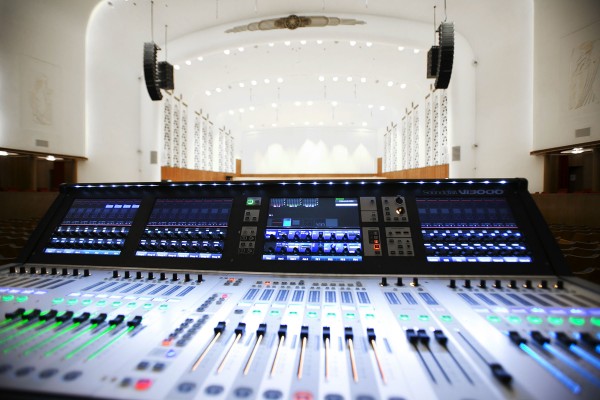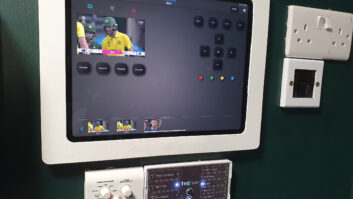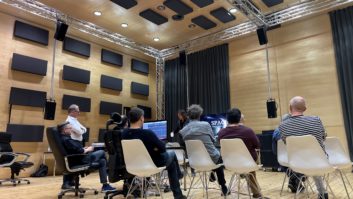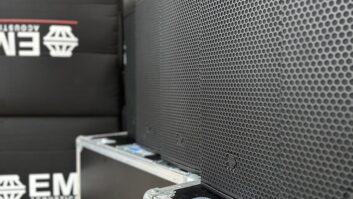
The varied programme of this 1930s-built Art Deco gem demanded an equally flexible new audio set-up as part of an extensive renovation programme, writes Tom Bradbury.
One of the UK’s premier arts and entertainment venues, the Grade II-listed Liverpool Philharmonic Hall (LPH) is in the midst of a £13.8 million refurbishment to improve all elements of the Art Deco building. Also home to the Royal Liverpool Philharmonic Orchestra, LPH hosts more than 250 concerts and events of all kinds each year – from classical, opera, folk, rock, pop and roots music to comedy, film, speeches, conferences and private events. A new audio system was therefore required that offered flexibility but did not detract from the venue’s architecture.
Liverpool-based Adlib was invited to tender for the design and supply of the kit, opting for a Coda Audio ViRAY system with a Soundcraft Vi3000 at front of house.
“Flexibility and multi-functionality were crucial requirements, as well as delivering top-quality audio for all events, with an infrastructure capable of dovetailing with current touring sound rigs,” explains Adlib installations director Roger Kirby. “Coda’s ViRAY is impressively coherent, it has a high output and looks elegant, which is essential in a building like Liverpool Philharmonic Hall with its Art Deco-style architecture.”
Kirby and Adlib managing director Andy Dockerty worked closely with Coda Audio’s technical support manager Edgar Krueger, with installation and system commissioning co-ordinated by Adlib system technician George Puttock working alongside Gilbert-Ash, the venue’s main contractor.
The main PA hangs comprise 14 flown Coda ViRAY per side, with three Coda SC2-F bass extension units flown on each side immediately behind the main arrays.
Three Coda SCP sensor controlled 2 x 18in subs are ground-stacked each side, while the curvature of the stage means four Coda TiRAY full-range front-fills are needed to cover the front row of the stalls. Meanwhile, eight Coda G308s are located just upstage of the proscenium arch to provide foldback for the stage and upstage choir stalls. Power and control comes from Coda’s LINUS platform.
A dedicated returns multicore is used to connect the FOH console to the Linus 10 amp racks at side stage, and additional signal processing and control for day-to-day peripherals is managed by BSS Soundweb BLU160 processors. This was picked for its flexible switching and its routing of balanced signals for the SCP subs, in-fills and choir-fill speakers.
“Visiting engineers and our audiences have commented very positively about the quality of the sound and the TiRAY front fills eradicate any sightline issues while still providing an excellent sonic experience for our audiences,” says Richard Curtis, Liverpool Philharmonic’s acting technical manager.
Front of house

Adlib also specified a Soundcraft Vi3000 console as the FOH desk. Liverpool Philharmonic’s technicians attended a Soundcraft open day, hosted by Adlib, followed by an onsite demo which enabled Dave Kay, Adlib’s Soundcraft specialist, to highlight the console’s multiple features, as well as its intuitive user-interface.
With four touchscreens, the Vi3000 is the only console of its class that can be programmed and used simultaneously by two or more engineers.
Curtis adds: “The Soundcraft Vi3000 at FOH provides us with an up-to-date control system as well as being easy to adapt to any of the event types with which we use the PA – from RLPO concerts right through to pop/rock.”
As part of the full sound package, Adlib also provided on-site training for the Philharmonic house crew. They started by learning the fundamentals and philosophies of the system so they can optimise the new equipment, including Adlib’s patch and tieline systems and the ViRAY. The Soundcraft and BSS components were supplied by UK and Ireland Harman distributor Sound Technology.
“The installation was completed within a tight window of opportunity and we have already experienced the many advantages of the new system,” adds Curtis.
A series of high-profile artists have enjoyed the benefits of the new sound system since the venue reopened at the end of last year, midway through its refurbishment programme. These include Graham Norton, Imelda May, John Grant, David Gray, Dave Gorman, Nils Lofgren, Jacqui Dankworth, and many more. They and anyone else playing Liverpool Philharmonic Hall can now do so using the venue’s own sound rig without any augmentation.
Curtis adds: “Once appointed for this project, Adlib’s Andy Dockerty, Roger Kirby and George Puttock worked swiftly. With continuing good service and attention to detail from the Adlib team, we are learning the many advantages of the new system.
“Visiting engineers and our audiences have commented positively about the quality of the new sound, and smaller system components onstage have eradicated sightline issues while still providing an excellent sonic experience for our audiences.”
Pictures courtesy of Deana Kay
www.adlib.co.uk
www.bssaudio.com
www.codaaudio.com
www.gilbert-ash.com
www.harman.com
www.liverpoolphil.com
www.soundcraft.com
www.soundtech.co.uk







